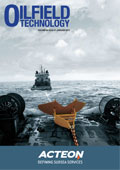Editorial comment
It is estimated that the northern area of Iraq bordering with Turkey and Iran known as Kurdistan holds an estimated 45 billion bbls of oil. Oil companies have already made some big discoveries in the region, and ExxonMobil is currently planning to drill to find more. Former BP Chief Executive Tony Hayward has claimed that “Kurdistan is the oil exploration capital of the world”.
Register for free »
Get started now for absolutely FREE, no credit card required.
This is a big claim, and oil majors looking for the next big thing would do well to take notice. In tantalizing descriptions of the ‘land of plenty’, visitors to the region have pointed out how the oil is so profuse that it seeps from the ground and surrounding rocks, and the Kurdistan Regional Government (KRG) predicts that the area will be producing around 2 million bpd of oil by 2019. However, as is often the case, these huge potential oil finds are situated in an area of the world that is straining under a high degree of geopolitical tension, with a political future that is difficult to predict. Tensions between the Kurds and the Sunni and Shia Muslims of Iraq continue to complicate oil exploration-related activity in the region both in terms of policy, payments and security. The KRG is currently looking towards establishing its own infrastructure to export oil directly across the border to Turkey, thus circumnavigating any influence from Baghdad.
However, oil companies clearly believe the risks involved in operating in this region are outweighed by the huge potential rewards possible in a big find. In this issue of Oilfield Technology, we feature an article on page 16 that looks at non-production risks faced by O&G majors globally; particularly in relation to security issues, and the article outlines ‘seven steps to safe operations’. Of course, alongside monitoring non-production risks, the industry also needs to keep an ever watchful eye on production risks. Much time and effort is still being invested into ensuring and communicating the safety of shale gas production. But second on the list of ‘risky business’ is operations in the Arctic. Shell is still pushing forward with its mission to tap into the Arctic’s oil-rich reserves, but has been experiencing a number of setbacks in its plans to drill in this challenging region. Its Kulluk drilling rig recently ran aground off the coast of Alaska, after its towing vessel lost power in a storm. The problems could spell more difficulty for Shell in securing permits to drill in the Arctic.
For the US generally, oil production is looking good. The American Petroleum Institute’s head representative, Jack Gerard, has recently gone so far as to say that the US is at “a great turning point in [the] nation’s history” and is set to “realign the energy axis toward the West and into [the West’s] own control”. Analysts are predicting that the US could even overtake Saudi Arabia to become the largest oil producer in the world by the end of this decade, thanks largely to the increased use of hydraulic fracturing and horizontal drilling techniques to access tight oil reserves. For North America, a reduced dependence on reliable production in the Middle East is seen as a positive thing. For the West, occupying a position of self sufficiency in terms of production is certainly risk mitigating. However, there is no getting away from the fact that the oil industry is a truly global one, and, according to the Financial Times, analysts have predicted that, going forward, the US “will not be able to ignore the potential threat to the world economy created by price rises and supply disruptions, and so would still have an interest in sustaining production in the Middle East.” It is ever apparent that the world, for better or for worse, continues to be inextricably linked through oil.

